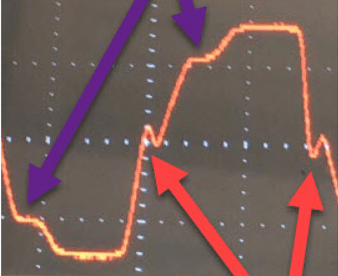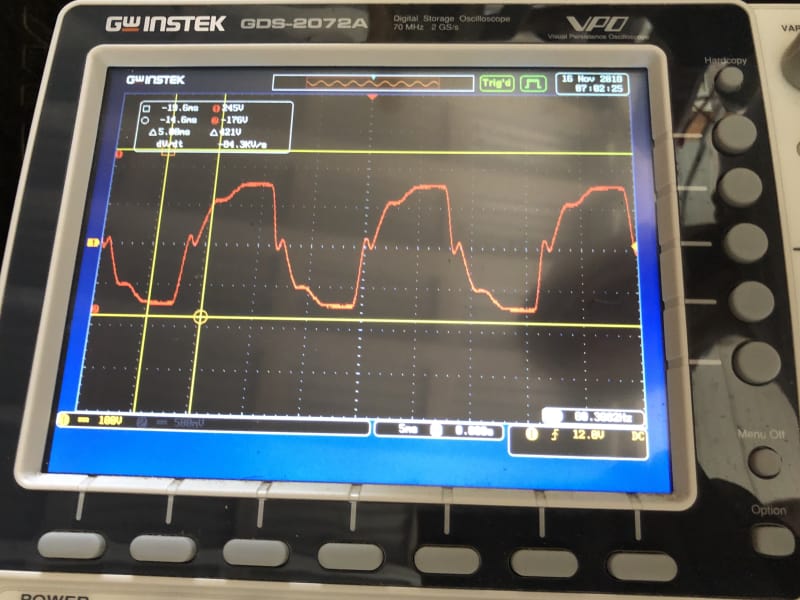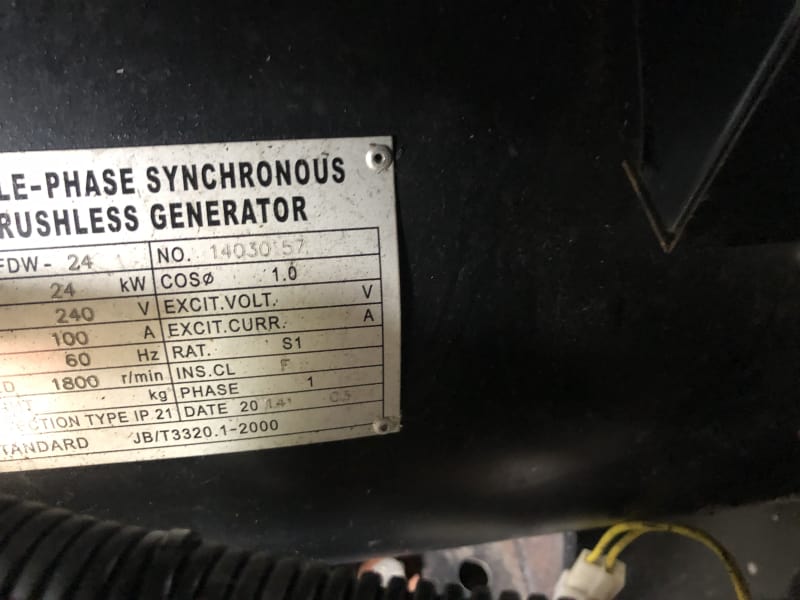A friend has a Chinese made 24kW diesel pm 60 Hz 3 phase generator wired for single phase output (zig-zag I think). He is off grid here in Hawaii, and has used it for backup to his PV system occasionally. After he burnt up a few appliances, we looked at the output on my oscilloscope and found this distorted waveform.

This is a brushless, self-excitated rotating field generator. The nameplate list the Chinese standard JB/T 3320.1-2000. We have replaced the AVR module with a new one with no change to the output. Any ideas on what to look at to find the problem are greatly appreciated.
K2ofKeyLargo

This is a brushless, self-excitated rotating field generator. The nameplate list the Chinese standard JB/T 3320.1-2000. We have replaced the AVR module with a new one with no change to the output. Any ideas on what to look at to find the problem are greatly appreciated.
K2ofKeyLargo


